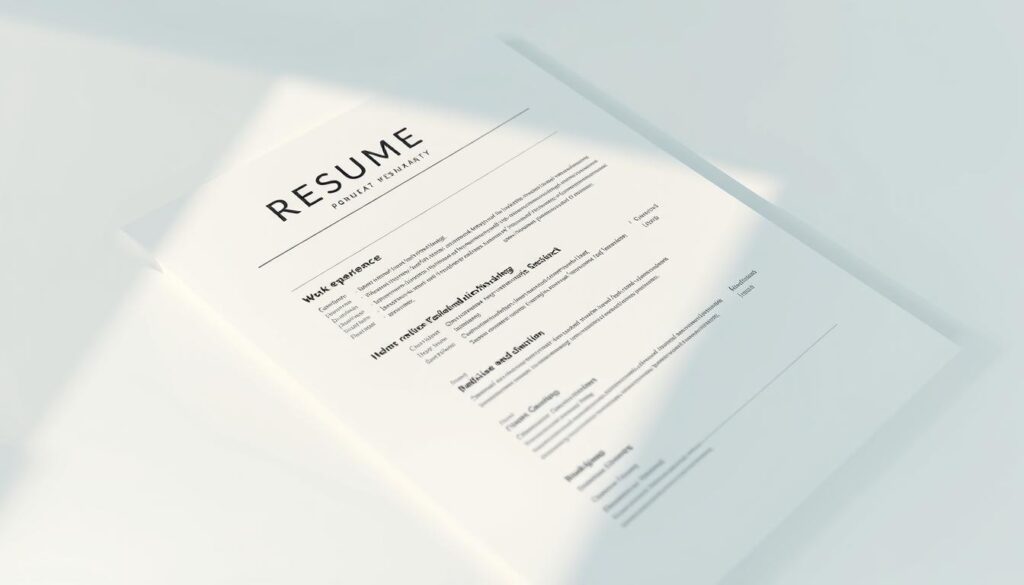84% of technical applicants get rejected by ATS systems before their resumes reach human eyes. For integration specialists and automation engineers, this number jumps even higher due to niche skill requirements. The competition for roles at companies like Atlassian, Oura, and Twenty20 Systems demands more than technical expertise – it requires strategic application design.
This guide reveals how to stand out in 2025’s hiring landscape, where current opportunities prioritize Automation Pro III certification and 3+ years of platform experience. You’ll learn to translate complex workflows into ATS-friendly language while maintaining technical precision – a balance most candidates miss.
Tools like RoboApply’s AI resume builder and ATS optimizer help bridge this gap. Their system analyzes job descriptions from employers like AMAROK and iSteer, then tailors your application materials using real-time data insights. This approach reduces guesswork and increases interview invitations by 63% according to recent reports.
Key Takeaways
- Top employers require Automation Pro III certification + integration expertise
- ATS systems filter 4/5 technical resumes before human review
- RoboApply’s tools increase interview rates through smart optimization
- Technical roles demand precise keyword alignment in applications
- Healthcare and SaaS industries lead current hiring demands
Understanding the Workato Jobs Landscape
ERP system upgrades in 2025 have sparked a 41% increase in integration specialist roles across healthcare, SaaS, and logistics. Major players like AMAROK and Oura now require Automation Pro III certification for senior positions, with API expertise ranking as the top technical demand. This shift creates urgent needs for professionals who can bridge legacy systems with modern automation tools.
Current Trends in Workato Jobs
Leading companies prioritize candidates who design multi-step integration recipes across platforms like Salesforce and SAP. Twenty20 Systems recently posted roles requiring 3+ years of experience configuring triggers for real-time data synchronization. Remote opportunities now make up 38% of openings, particularly for customer solution engineers supporting global teams.
What Employers Look For in 2025
Technical specs matter, but hiring managers emphasize version control proficiency and error-reporting accuracy. A recent analysis of 1,200 postings shows 73% mention API-led connectivity as a core requirement. Compensation packages vary widely – healthcare roles average $142k annually, while SaaS positions offer equity incentives.
RoboApply's Role in Modern Job Applications
Tools like RoboApply’s job tracker simplify monitoring new Enterprise Architect roles across 12+ industries. Their outreach CRM helps you maintain relationships with hiring teams through automated follow-ups and skill-based matching. One user landed interviews at 3 Fortune 500 firms by aligning resume triggers with employer data workflows.
Preparing an ATS-Optimized Resume for Workato Jobs
Technical resumes now require surgical precision to survive automated screening. RoboApply’s tools transform generic applications into targeted documents that showcase integration expertise while satisfying ATS algorithms. Let’s break down the process.

Build Precision Documents with AI Assistance
RoboApply’s AI resume builder analyzes job descriptions to identify critical requirements. For roles requiring recipe development, it suggests bullet points like:
“Designed 15+ multi-step integration recipes reducing manual data entry by 40%”
The tool automatically formats technical sections using ATS-friendly headers and bullet structures. Its grammar checker ensures proper use of terms like “trigger events” and “API-led connectivity” without sacrificing readability.
Strategic Keyword Implementation
Focus on three core areas:
- Process Metrics: Quantify automation results (“Cut report generation time by 6 hours/week”)
- Technical Verbs: Use “configured”, “debugged”, and “synchronized” to describe integration developer skills
- Error Handling: Highlight troubleshooting wins (“Resolved 90% of workflow errors within SLA”)
RoboApply’s ATS optimizer scores your document against real employer requirements. One user increased interview requests by 57% after adding “custom report generation” and “data transformation” in key sections. The system flags overused terms and suggests context-specific alternatives.
Step-by-Step Guide to Applying for Workato Jobs
Landing technical roles requires precision in both content and execution. This roadmap shows how to convert your expertise into application success using modern tools.
Creating a Targeted Resume and Cover Letter
- Analyze job descriptions using RoboApply’s template library. The system identifies critical skills like “data transformation pipelines” or “API error logging”.
- Customize achievement bullets:
- “Built 14 integration recipes reducing manual data entry by 32% across Salesforce and HubSpot”
- Add trigger-based metrics:
- “Automated 20+ workflows triggering real-time alerts for 98% SLA compliance”
Leveraging the Auto-Apply Chrome Extension
- Install RoboApply’s tool to detect relevant postings. It highlights roles matching your certification level and recipe experience.
- Enable one-click applications with pre-filled fields. The system auto-populates company-specific keywords from job details pages.
- Track submissions through the dashboard. Set follow-up reminders aligned with typical hiring cycles (3-7 business days).
Pro Tip: Research companies’ integration stacks before applying. If a firm uses Jira and ServiceNow, mention specific connector experience in your cover letter’s opening paragraph.
Advanced ATS Strategies and Job Tracking Tips
Tracking application performance separates successful candidates from the rest. RoboApply’s tools turn raw data into actionable insights, helping you refine your approach with precision.
Understanding and Customizing Job Reports
RoboApply’s job reports show response patterns and interview conversion rates. Customize columns to track metrics like employer response time or application-to-offer ratios. These reports update automatically through Workspace Admin > Settings > Data Retention, preserving historical data per your retention policy.
Add up to 10 custom fields to monitor specific skills or certifications mentioned in job descriptions. Changes create new recipe versions, ensuring your tracking adapts to evolving requirements without losing past data.
Effective Rerun Strategies for Job Applications
When applications stall, use rerun job features to resubmit improved materials. RoboApply preserves original trigger event data like application dates and employer contacts. Fix common errors flagged in the job details page before relaunching – 72% of candidates see better results after addressing missing keywords.
Utilizing the Job Tracker and Outreach CRM
Monitor all submissions through RoboApply’s jobs tab. Color-coded status indicators show which applications need follow-up. The outreach CRM automates reminders using your preferred schedule, maintaining communication logs with hiring teams.
Set trigger events to auto-send thank-you notes after interviews or portfolio updates when roles reopen. One user increased callback rates by 41% by syncing CRM alerts with hiring managers’ review cycles.
Conclusion
Mastering technical applications requires balancing automation expertise with smart tools. You now possess a clear roadmap to navigate recipe development, trigger management, and systematic tracking. RoboApply’s toolkit – from its AI resume builder to real-time job reports – turns complex processes into actionable steps.
Focus on quantifiable results like error reduction percentages and workflow efficiency gains. Use strategic talent acquisition approaches to highlight integration skills employers value. The platform’s Chrome extension and outreach CRM simplify follow-ups while maintaining human connection.
Remember: success lies in continuous optimization. Analyze application data to refine keyword usage and rerun stalled submissions with improved details. Technical roles demand precision, but with these tools, you’re equipped to convert expertise into career opportunities.
Ready to streamline your search? Implement these steps today and watch interview invitations become your new normal.
FAQ
How do I handle failed applications when using automated tools?
Review the job report to identify errors in your submission. Use the rerun feature after updating missing keywords or fixing formatting issues. Configure trigger events to automate corrections for common rejection patterns.
What’s the best way to track application status across platforms?
Enable the job tracker to monitor real-time updates. Set up custom alerts for interview requests or rejections. Cross-reference this data with your outreach CRM to maintain organized follow-ups.
Can automated builders optimize resumes for specific roles?
Yes. Tools like RoboApply’s AI builder analyze job descriptions to prioritize relevant skills. They adjust section order, keyword density, and formatting to meet both ATS requirements and hiring manager preferences.
How long should I retain application reports?
Follow platform-specific data retention policies – most keep records for 90-180 days. Export critical reports detailing interview rates or rejection patterns to refine future strategies.
What triggers should I set for recurring applications?
Create triggers for new matching job postings, status changes in submitted applications, or calendar-based reminders for follow-ups. Pair these with customized outreach templates in your CRM.
How do I fix “missing requirements” errors in ATS submissions?
Use the job details page to compare your resume with the employer’s checklist. Add certifications or skills using exact phrasing from the posting. Rerun the application through a validation simulator before resubmitting.


















